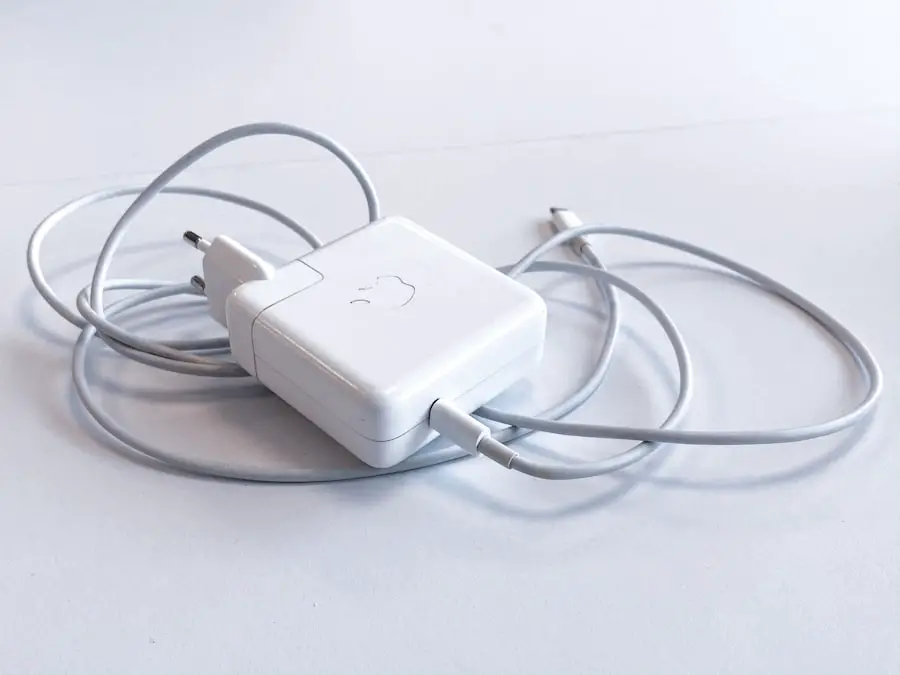The iPhone, a device that has become ubiquitous in modern life, features a battery indicator that serves as a crucial tool for users to monitor their device’s power status. This indicator is not merely a simple gauge; it employs a color-coded system that communicates vital information about the battery’s health and charge level. The colors displayed can range from green, indicating a full charge, to red, signaling a low battery.
However, one color that often raises questions among users is yellow. Understanding the significance of this hue is essential for effective device management and ensuring optimal performance. The battery indicator’s color can provide insights into the device’s current state and its operational parameters.
For instance, while green typically signifies that the battery is sufficiently charged, yellow can indicate a shift in power management settings or a warning about the battery’s status. This article delves into the meaning behind the yellow battery indicator, exploring its implications, troubleshooting methods, and tips for enhancing battery longevity. By gaining a deeper understanding of these aspects, users can better navigate their iPhone’s functionality and maintain its efficiency.
Key Takeaways
- The iPhone battery indicator uses different colors to represent the battery level and status.
- A yellow battery indicator typically means that the battery is low and needs to be charged soon.
- Reasons for a yellow battery indicator can include heavy usage, background app activity, or a faulty battery.
- Troubleshooting a yellow battery indicator can involve closing background apps, restarting the phone, or checking for software updates.
- Tips for improving iPhone battery life include adjusting screen brightness, managing app usage, and using low power mode when necessary.
What does a yellow battery indicator mean?
Understanding Low Power Mode
The yellow color serves as a visual cue that the device is prioritizing battery preservation over performance. In addition to indicating Low Power Mode, a yellow battery indicator can also suggest that the device is experiencing some form of power management issue. This could be due to various factors, including software glitches or hardware malfunctions.
Impact on Device Functionality
Users may notice that their iPhone behaves differently when in this mode, with certain features being limited or disabled altogether. Understanding this context is crucial for users who may be unfamiliar with the implications of the yellow indicator and how it affects their device’s functionality.
Key Takeaways
In summary, the yellow battery indicator is an important visual cue that alerts users to the need to conserve energy and potential power management issues. By understanding Low Power Mode and its implications, users can take steps to extend their iPhone’s battery life and troubleshoot any underlying issues.
Reasons for a yellow battery indicator

There are several reasons why an iPhone might display a yellow battery indicator. The most common reason is that the user has manually activated Low Power Mode to conserve battery life. This feature can be turned on through the Settings app or by accessing the Control Center.
When enabled, it alters various settings to reduce power consumption, which is particularly useful during long days when charging opportunities are limited. Another reason for the yellow indicator could be related to the device’s overall battery health. As batteries age, their capacity diminishes, leading to more frequent low-battery warnings and the need for power-saving measures.
If an iPhone’s battery health has significantly declined—often indicated by a percentage lower than 80%—the device may automatically enter Low Power Mode more frequently to manage its dwindling energy reserves effectively. Additionally, software updates or bugs can sometimes trigger unexpected changes in battery behavior, leading to the yellow indicator appearing without user intervention.
How to troubleshoot a yellow battery indicator
| Issue | Possible Cause | Troubleshooting Steps |
|---|---|---|
| Yellow Battery Indicator | Low battery level, faulty battery, charging issue | 1. Check battery level and recharge if low. 2. Inspect battery for damage. 3. Verify charging cable and port for any issues. |
If an iPhone user encounters a persistent yellow battery indicator and is unsure why it is displaying this color, there are several troubleshooting steps they can take. First, users should check if Low Power Mode has been inadvertently activated. This can be done by navigating to Settings > Battery and looking for the Low Power Mode toggle.
If it is on and the user does not wish to conserve battery life at that moment, they can simply turn it off. If Low Power Mode is not enabled and the yellow indicator persists, users should consider restarting their device. A simple reboot can often resolve minor software glitches that may be causing unusual behavior in the battery indicator.
To restart an iPhone, users can press and hold the side button along with either volume button until the slider appears, then slide to power off. Once the device is powered back on, users should check if the battery indicator has returned to its normal state. In cases where the yellow indicator continues to appear despite these efforts, users may want to explore their battery health further.
This can be done by going to Settings > Battery > Battery Health. Here, users can view their maximum capacity and whether their battery is operating at peak performance. If the maximum capacity is significantly reduced or if there are any indications of performance management being applied, it may be time to consider replacing the battery.
Tips for improving iPhone battery life
To prevent frequent encounters with a yellow battery indicator and enhance overall battery longevity, users can adopt several strategies aimed at optimizing their iPhone’s power consumption. One effective method is to adjust screen brightness settings. Reducing brightness or enabling Auto-Brightness can significantly decrease energy usage.
Users can find this option under Settings > Display & Brightness. Another practical tip involves managing background app refresh settings. Many applications continue to run in the background even when not actively in use, consuming valuable battery life.
By navigating to Settings > General > Background App Refresh, users can selectively disable this feature for apps that do not require constant updates. This simple adjustment can lead to noticeable improvements in battery performance. Additionally, users should consider limiting location services for apps that do not need real-time location tracking.
By going to Settings > Privacy & Security > Location Services, users can choose to allow location access only while using the app or turn it off entirely for specific applications. This not only conserves battery life but also enhances privacy by reducing unnecessary data sharing.
Common misconceptions about yellow battery indicators

Despite its clear implications regarding Low Power Mode and power management, there are several misconceptions surrounding the yellow battery indicator that can lead to confusion among users. One common myth is that a yellow indicator always signifies a failing battery or an imminent need for replacement. While it can indicate reduced performance due to low charge levels or power-saving settings, it does not inherently mean that the battery is defective or needs immediate attention.
Another misconception is that Low Power Mode will permanently alter how an iPhone operates once activated. In reality, this mode is temporary and can be toggled on or off at any time without lasting effects on the device’s performance or settings. Users may worry that enabling Low Power Mode will lead to diminished functionality in the long term; however, this is not the case as it simply serves as a temporary measure to extend battery life during critical moments.
When to seek professional help for iPhone battery issues
While many issues related to a yellow battery indicator can be resolved through user intervention and basic troubleshooting techniques, there are instances when seeking professional help becomes necessary. If users have attempted all recommended troubleshooting steps—such as disabling Low Power Mode, restarting the device, and checking battery health—yet still experience persistent issues with their iPhone’s battery performance or indicator color, it may be time to consult an expert. Additionally, if users notice unusual behavior from their device beyond just the yellow indicator—such as rapid battery drain even when not in use or overheating—these symptoms could indicate underlying hardware problems that require professional diagnosis and repair.
Apple-certified technicians have access to specialized tools and knowledge that can accurately assess battery health and overall device functionality. Moreover, if an iPhone is still under warranty or covered by AppleCare+, seeking professional assistance is advisable before attempting any DIY repairs or replacements. Authorized service providers can ensure that any necessary repairs are conducted using genuine parts and adhere to Apple’s quality standards.
Conclusion and final thoughts
Understanding the nuances of iPhone battery indicators—particularly the significance of a yellow indicator—empowers users to manage their devices more effectively. By recognizing what this color represents and taking proactive steps to troubleshoot potential issues, users can enhance their overall experience with their iPhones while ensuring optimal performance and longevity of their devices. With proper care and attention to power management settings, users can minimize disruptions caused by low battery levels and enjoy uninterrupted usage of their beloved devices.
If you are wondering why your battery indicator on your iPhone is yellow, it could be due to a variety of reasons such as low power mode or a faulty battery. For more information on how to troubleshoot battery issues on your iPhone, check out this helpful article on accessibility comparison between iPhone and Android for low vision. This article provides valuable insights into how different smartphone platforms cater to users with low vision and offers tips on optimizing your device for better accessibility.










